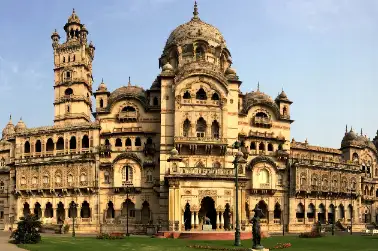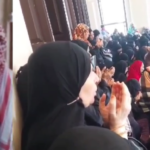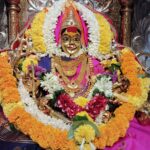
A true personification of rich culture and history, the Laxmi Vilas Palace stands tall in the vibrant city of Vadodara, Gujarat. It is one of the most prominent and well preserved landmarks of the city
The construction of the building commenced in 1878 on the orders of Maharaja Sayajirao Gaekwad III and was completed by 1890. The palace was estimated to have cost GBP 180,000 at that point of time and was considered technologically advanced with the presence of luxurious western style elevators within the palace. The palace was built using brick, red sandstone, blue trap stone from Pune and Italian marble. Sprawling across an area of about 700 acres, it is still home to the royal family of Vadodara. It is a colossal building consisting of 170 rooms that is quoted to be the size equivalent to four times that of the Buckingham Palace.
The palace was designed by the architect, Major Charles Mant who adopted an Indo-Saracenic style that showcased various forms of Hindu, Gothic and Mughal architecture methodologies with towering arches, domes and intricately planned minarets. Following the death of architect Mant, the work was later completed by architect Robert Fellowes Chisholm.
While the palace is open for the common public to explore, a part of it remains restricted for the privacy and safety of the royals who reside there. On arrival at the palace, you have to buy an entrance ticket for a nominal price of Rs. 225. From there, you are given an audio device which is included in the ticket price itself, which gives you a tour of the various rooms in the building in a sequential order. As you proceed to the rooms, the audio tour gives you a brief history of each and in your preferred languages as well.
The tour begins in the courtyard that is elegant and aesthetic. The gardens of Laxmi Vilas palace were designed by the renowned botanist, Sir William Goldring, who also designed the Kew Botanical Gardens in London. Among the rooms that you come across on the tour are the Coronation Room, the Darbar Hall, Hathi Hall and the Armoury.

The Coronation Room is one that is grand in its simplicity. The throne on which the Gaekwad Maharajas were coroneted on, is a simple cushion placed under a gold peacock umbrella, which although simple, has certain opulence to it. The room is adorned with exquisite paintings by the renowned painter, Raja Ravi Verma. The most noteworthy paintings in the room were that of Goddesses Saraswati and Lakshmi. Apart from these, the paintings of Kansa being warned by an Oracle and Keechaka Vadha are exceptional as well.
One of the most commanding rooms is the Armoury that houses an impressive collection of swords, daggers and other antique weapons, ranging from chakras to submachine guns that according to the audio guide, have been used in battles at one point or another. The most significant exhibits of the armoury are the Navadurga sword that was intricately designed with the nine manifestations of Goddess Durga on the sword and the Wagh Nakh or the Tiger Claw that was used by Chhatrapati Shivaji Maharaja to kill the Mughal king Afzal Khan.
The Hathi Hall or The Elephant Room is breathtaking with its intricacies, that of the ceiling of the hall that is designed in the shape of an elephant’s head. It is stated that the king used this room to ascend on the back of a waiting elephant. The room is adorned with varied headgears that represent different cultures and eras.
However, the most resplendent and glorious room is the Darbar Hall that dwarfs all else in the palace. The floor of this room is inlaid with a mosaic of semi precious stones bearing the insignia of the Gaekwads. The high ceiling of the room is adorned by Belgian chandeliers, when lit, give a sense of nostalgia. The intricately carved balconies on the upper sides of the walls are made in rosewood and sandalwood. The palace boasts of the maximum number of stained glass ever used in a palace as every window in this hall is decorated in stained glass that depicts famous scenes from Hindu mythologies which gives it an old world charm. Moreover, the hall is flanked by a beautiful European style fountain that has Greek marble statues adding to its appeal.

A 300 ft. tower stands tall in the palace which was once meant to function as a clock tower. The plan was later scraped on the basis that the constant ticking of the clock would create a disturbance for the residents. The tower is therefore used to keep a beacon to signify when the king was present at the palace.
The palace also houses a number of buildings including the LVP Banquets & Conventions, the Moti Baug palace and the Maharaja Fateh Singh Museum building that was once used as a school for the Maharaja’s children but now exhibits the pre-eminent collection of paintings by Raja Ravi Verma and other world famous artefacts.
On one’s trip to Vadodara, the Laxmi Vilas palace is a must visit for anyone who wants to travel back in time and experience a slice of history.
































